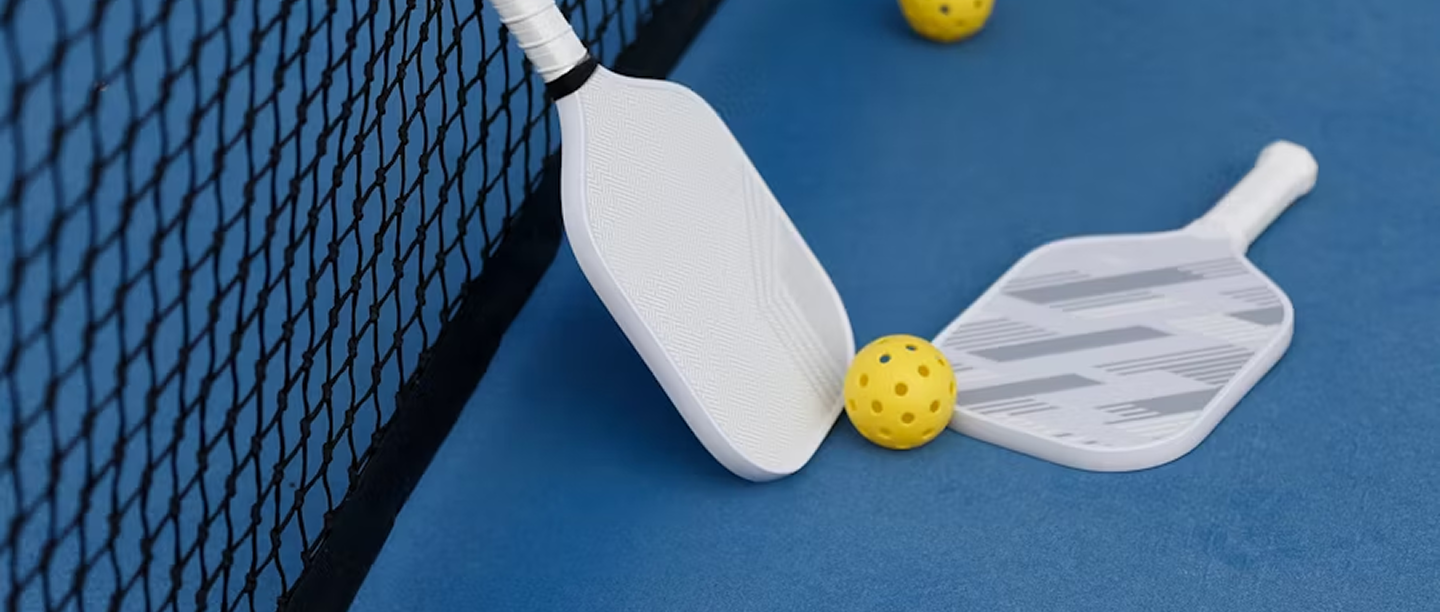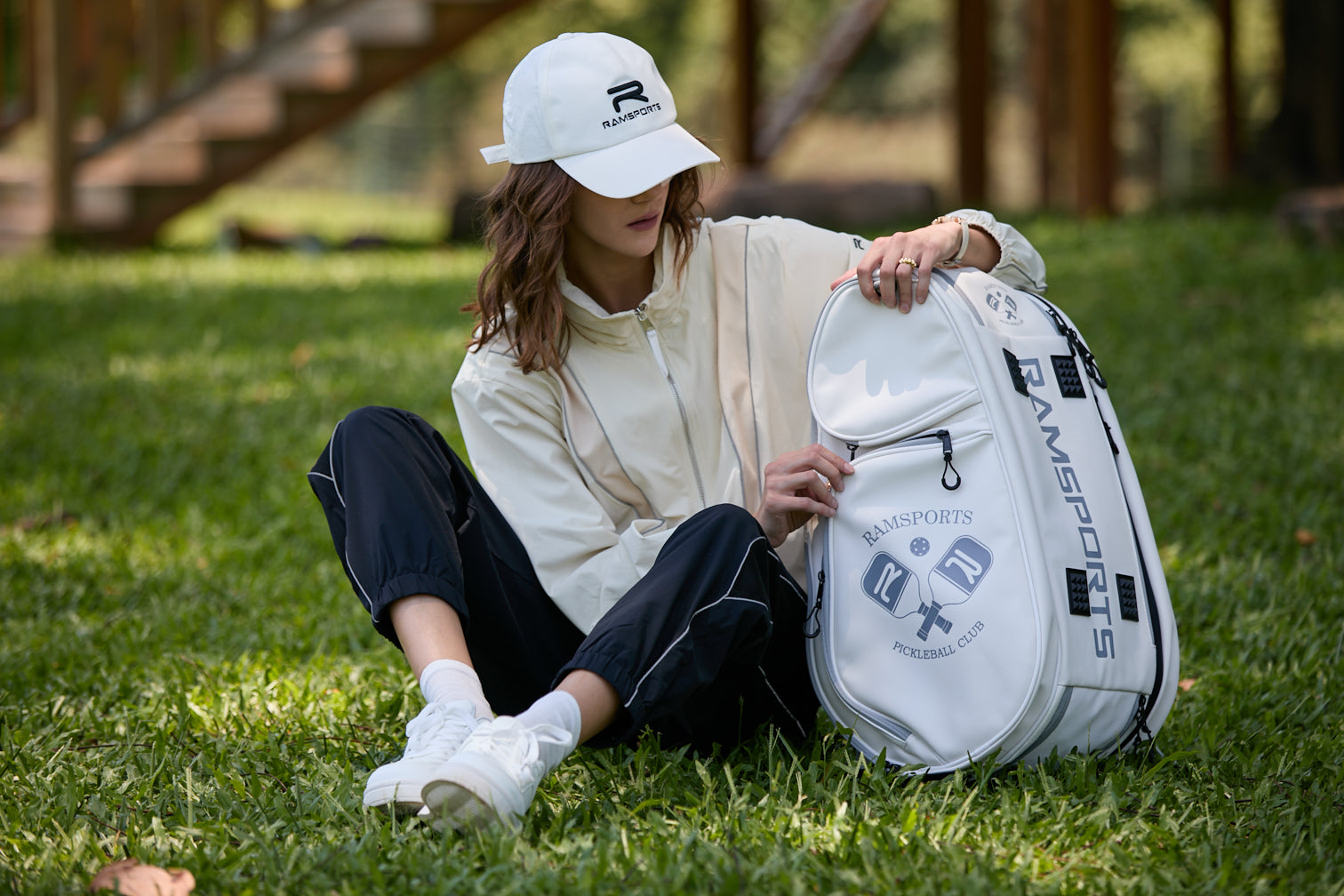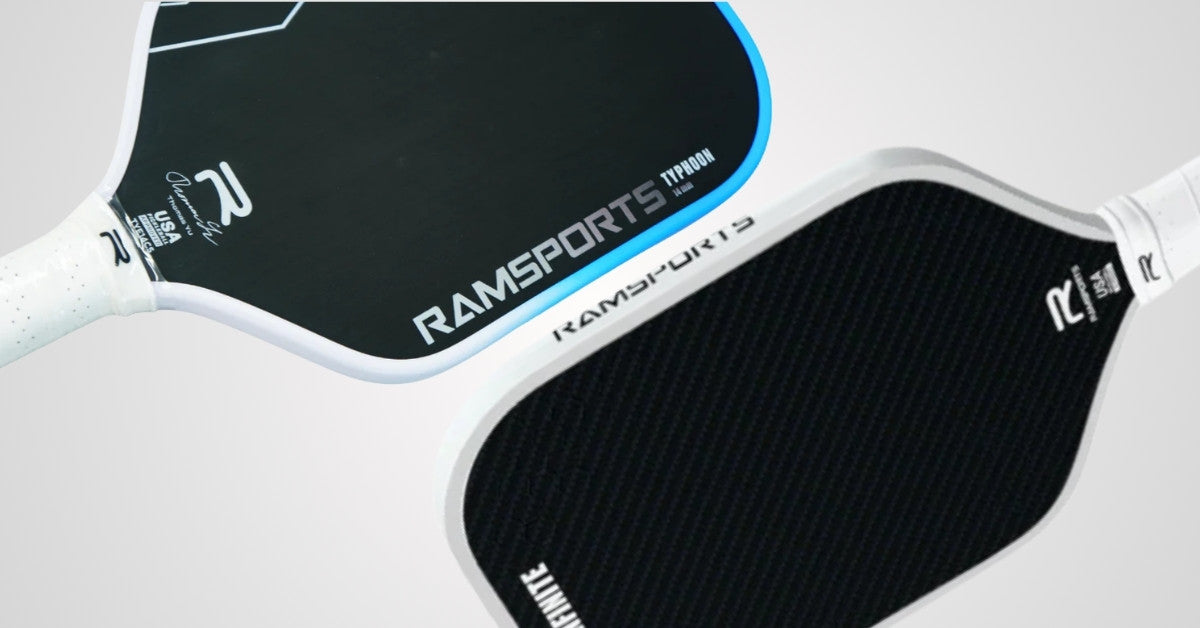The Only Pickleball Paddle Care Guide You Need!

A well-maintained paddle preserves feel, control, and power—and helps you play your best for longer. This guide outlines a clear, practical care routine you can apply at home—plus a few pro tips.
After-Play Routine
- Wipe the face with a dry or lightly damp microfiber cloth to remove dust and ball residue.
- Dry the edge and handle to prevent moisture creeping under the edge guard.
- Ventilate your bag: open compartments so humidity can escape.
- Store properly: place the paddle in a sleeve or case, or in a pickleball bag with a designated, padded paddle compartment.
Consider: A purpose-built pickleball bag with a designated, padded paddle compartment keeps faces and edges away from keys, zippers, and bottles.
Why Care Matters
Most modern paddles pair a polymer honeycomb core with a composite face carbon fiber, fiberglass, or graphite or a Hybrid Kevlar-carbon fiber face. The face’s texture drives spin and directional control, but oils and ball fuzz can compress that texture. Heat, cold, and moisture stress the core and adhesives. Grip condition shapes comfort, stability, and shot consistency.
A Hybrid Kevlar-carbon fiber face paddle blends Kevlar’s impact toughness and slightly more compliant feel with carbon’s stiffness and crisp response. The result is a durable layup with a balanced power–control profile and strong spin potential when the surface is kept clean and dry.
Routine cleaning and thoughtful storage protect these materials and keep performance consistent over time.

Cleaning the Paddle Face
You’ll need
-
Two microfiber cloths (one dry, one lightly damp)
-
Mild dish soap (optional, a small drop)
-
Soft-bristle brush or melamine “magic” eraser (very light, occasional use)
-
For raw-carbon faces: a carbon cleaning block or “paddle eraser”
Steps
-
Dry dust-off: Use the dry microfiber first to lift loose debris.
-
Spot clean: Dampen the second cloth with water. Add a drop of mild soap only for stubborn marks.
-
Refresh texture (use the right method):
-
Raw-carbon faces: Prefer a brand-recommended carbon cleaning block or paddle eraser to lift ball residue while preserving texture. Use light, even strokes.
-
Other finishes: A soft brush or a light pass with damp melamine foam can help. Keep pressure minimal and use sparingly.
-
Dry completely: Finish with the dry cloth.
Avoid
-
Solvents (acetone, paint thinner), abrasive pads, pressure washing, or soaking.
-
Alcohol on painted logos or glossy finishes (may dull or haze). If you must use it, test on a discreet area first.
Practical addition: Keeping a compact microfiber in your bag makes post-session cleaning consistent.
Grip and Overgrip Maintenance
Replace when the grip feels slick, carries odor, or you’re squeezing harder for control. To refresh: remove the worn overgrip, wipe and dry the handle, then rewrap from butt cap to throat with consistent overlap and finish with tape. Players with perspiring hands benefit from frequent overgrip changes.

Edge Guard and Face Protection
-
Inspect monthly for lifting or gaps.
-
Warranty first: If the edge guard lifts, check your paddle’s warranty policy before any DIY fix—some brands prefer you contact them.
-
If DIY is acceptable, clean the area and apply a small amount of flexible, paddle-safe adhesive, then hold in place with elastic bands overnight. Monitor thereafter.
-
Use protective edge tape on high-contact zones (top edge) and replace when frayed.
-
Avoid using the edge to tap shoes or scoop balls; use a towel or your hand instead.
Storage and Transport
Avoid heat and deep cold, both of which can stress resins/adhesives and cores. Store in a cool, dry place and air out damp bags. Use a semi-rigid or thermoformed case, and keep your paddle in the designated compartment of your pickleball bag and separate it from metal bottles, pumps, and ball hoppers. When carrying two, place them face-to-face.
Common Mistakes to Avoid
-
Tapping shoes or scraping fences with the edge.
-
Sealing a wet towel or sweaty apparel in the same compartment as your paddle.
-
Using harsh chemicals or abrasive pads on the face or logos.
-
Leaving the paddle on a hot court or in a vehicle between matches.

Even with good care, paddles slowly lose pop. High-frequency players may need replacements every 12–18 months. Keeping older paddles clean and protected gives you reliable backup pickleball equipments when needed.
When evaluating a replacement, Ramsports pickleball paddles combine durable Hybrid Kevlar-carbon fiber face with textured faces designed to maintain spin longer, and grips that are straightforward to rewrap.
Consistency wins. Build these habits after every session and you’ll keep texture, pop, and control longer with fewer surprises when the match is tight.
Shop Ramsports - pickleball equipment built to put winners on court.


